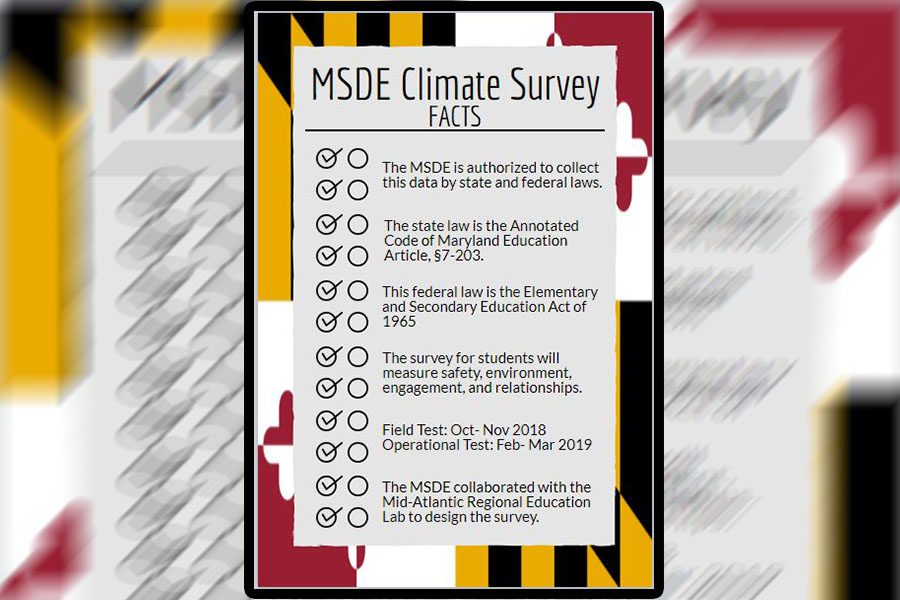All Schools in Md. Conduct MSDE Climate Survey
Graphic by Olivia Turner and Mark Schaefer
All schools in Maryland are required to take the survey as a part of its Every Student Succeeds Act (ESSA) Plan, which includes learning more about the school’s climate.
May 2, 2019
The Maryland School Climate Survey was administered to students and school faculty March. 20, after conducting a field test for troubleshooting purposes in the fall. However, there were many logistical and planning issues with the most recent survey, generating some differing opinions on the survey itself and its effectiveness among some students and teachers.
Maryland requires the survey as a part of its Every Student Succeeds Act (ESSA) Plan, which includes learning more about the school’s climate and requiring all counties to incorporate a school quality indicator.
In the past, when MCPS conducted its own student and educator surveys, the results of these surveys are shared with the principals of each school, who then shared them with their instructional leadership teams. The results have typically been used to create improvement plans for the next school year.
This survey includes questions from four domains: relationships, environment, engagement and safety. The Maryland State Department of Education (MSDE) calculates an index by averaging each of the individual domain scale scores, and then the final index is calculated by averaging the student and staff index scores. After all the data is collected, scores are calculated then distributed out to every school’s administration so they may use it how ever they see fit.
“It is important that every student, grades 5-11 have the opportunity to take the survey and to provide their point of view about their school,” said Donna Blaney, Supervisor of the Testing and Reporting Unit at MSDE.
Since the survey was only administered for the first time this year, the Maryland Board of Education (BOE) is still determining how the data will be shared with each school district and school. They believe more responses from the survey allow for more valid, reliable data that can be used later to compare with other sets of data within the school systems, Blaney said.
“The challenges that we have noticed so far this year have been logistical and student accessible in nature. The logistics of surveying a school’s population online adds a layer of challenge versus a paper survey,” Blaney said. “Offering accommodations and accessibility features for students has also been a challenge.”
When taking the most recent test in the spring, many students had trouble logging onto the program to even take the test. RHS scheduled everyone in the building to take the test on the same day during second period which resulted in multiple WiFi connection errors. However, Rockville administration made sure that every student who was not able to take the test on the scheduled day was able to retake it.
“I understand the purpose of it, but I think that there are many negatives,” sophomore Gabby Diaz said. “For instance, it’s really time-consuming and some students couldn’t complete it because of the slow internet, so why have a survey if not everyone will be able to take it.”





